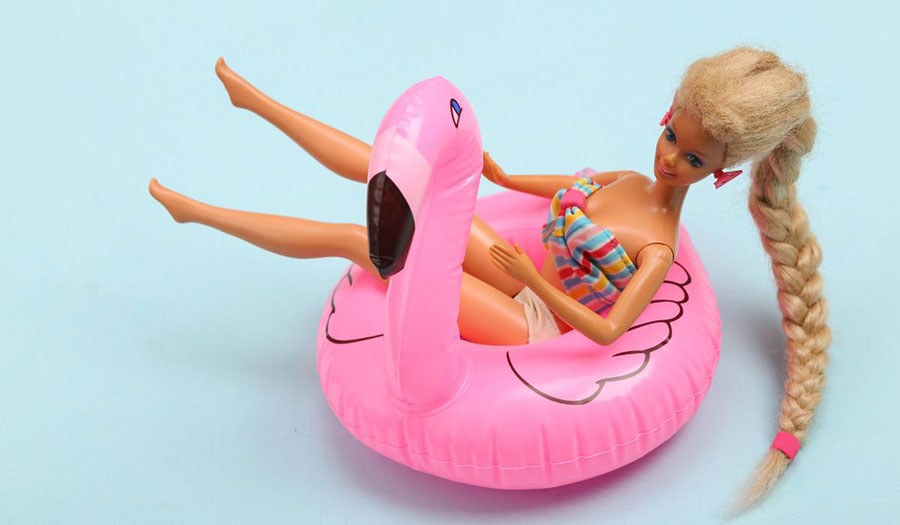Since her debut in 1959, Barbie has become much more than just a doll; she has achieved iconic status as a global cultural phenomenon. Created by Mattel co-founder Ruth Handler, Barbie has transcended generations, inspiring millions of girls and boys, and leaving an indelible mark on the toy industry. Let's delve into the fascinating history of Barbie, exploring her origins, evolution, and enduring legacy.
The Beginning of Barbie
Ruth Handler was inspired to create Barbie after observing her daughter, Barbara, playing with paper dolls and giving them adult roles. Recognizing a gap in the market for a three-dimensional adult female doll, Ruth envisioned a doll that would allow young girls to imagine and role-play various careers and aspirations.
In 1959, Barbie Millicent Roberts made her debut at the American International Toy Fair in New York City, sporting a striking black-and-white swimsuit, high heels, and a ponytail. Named after Ruth Handler's daughter, Barbie was an instant sensation. She challenged traditional gender norms of the time and opened up a new world of possibilities for young girls.
The Evolution of Barbie
Over the decades, Barbie has undergone a series of transformations that reflect changing cultural norms and attitudes. In the 1960s, Barbie's look diversified with new hairstyles, outfits, and career choices. In 1963, the iconic "Bubblecut" hairstyle was introduced, and Barbie's wardrobe expanded to include an astronaut, pilot, and more, inspiring young girls to dream big.
In the 1970s, Barbie embraced diversity, reflecting the changing demographics of society. Mattel introduced ethnically diverse Barbie dolls, such as African American, Hispanic, and Asian versions, aiming to make Barbie a relatable role model for children of different backgrounds.
The 1980s brought more significant changes to Barbie's world. The introduction of Barbie's friends and family, including her boyfriend Ken, and siblings Skipper, Stacie, and Kelly, expanded her universe and encouraged imaginative storytelling.
Barbie also ventured into various careers and hobbies, from doctors, engineers, and astronauts to athletes and artists. Each profession sought to inspire girls to pursue their passions and break gender stereotypes.
Criticism and Adaptation
As Barbie's popularity soared, she faced criticism for promoting unrealistic beauty standards and reinforcing gender stereotypes. In response to these concerns, Mattel began to adapt Barbie's image and messaging.
In 1997, Mattel launched the "Barbie I Can Be" campaign, which emphasized empowering messages about girls' capabilities and ambitions. Furthermore, efforts were made to showcase a more diverse range of body shapes and ethnicities with the "Fashionista" line, introduced in 2016.
Embracing Technology
Barbie has always been an innovator, and in the 21st century, she embraced technology to remain relevant in the digital age. "Hello Barbie," introduced in 2015, utilized artificial intelligence to engage in interactive conversations with children, while Barbie's Dreamhouse Adventures animated series brought her adventures to life on screens worldwide.
Collaborations and Cultural Impact
Barbie has also solidified her status as a pop culture icon through numerous collaborations with celebrities, fashion designers, and entertainment franchises. From special edition dolls based on Marilyn Monroe and Audrey Hepburn to partnerships with high-end fashion houses like Versace and Christian Dior, Barbie has consistently stayed at the forefront of fashion trends.
Additionally, Barbie has been featured in various movies and television shows, further contributing to her cultural influence. In 2020, Barbie even entered the realm of music by collaborating with artists like Billie Eilish and Dua Lipa.
From her modest beginnings in 1959 to her status as a global cultural icon, Barbie's journey through time has been nothing short of extraordinary. Throughout her history, she has adapted to societal changes, faced criticisms, and continually evolved to inspire generations of young minds.
While debates about Barbie's impact persist, her influence on empowering girls to dream big, challenging gender norms, and promoting inclusivity cannot be denied. As she continues to evolve and adapt, Barbie remains an enduring symbol of imagination, aspiration, and the boundless possibilities that await every child.




